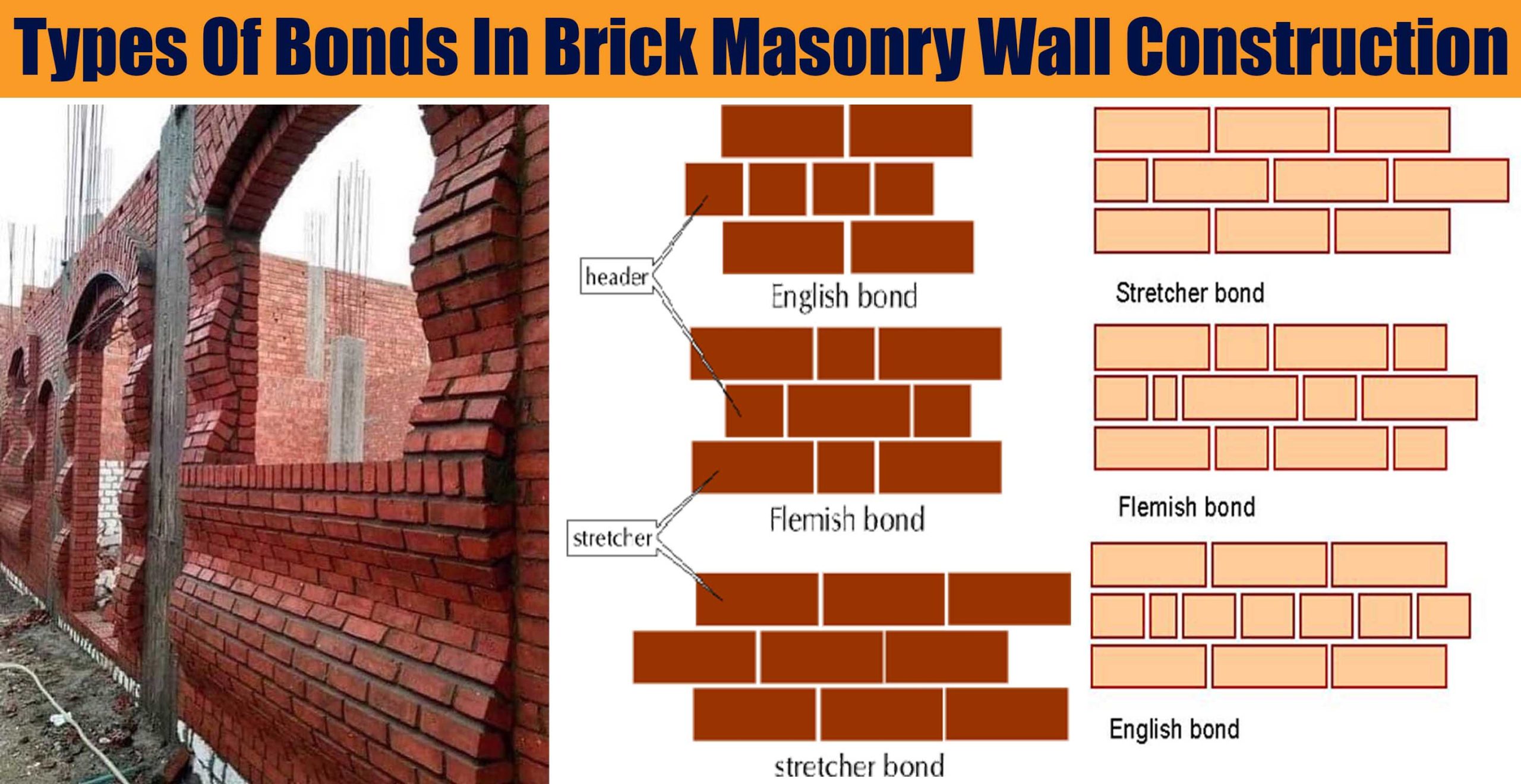
Types Of Bonds In Brick Masonry Wall Construction Engineering Discoveries
What are the different types bonds used in brick masonry? Home Building Email This Post A bond is formed when cement mortar fills a groove formed by adjacent bricks being laid side by side. Bonding helps distribute loads evenly over a large area. These bonds are like patterns in which bricks are laid, which can be used for brick walls and paving.

5 Types of Brick Masonry Definition, Brick Bond, Advantages & Disadvantages Guide
The general types Of brick bonds used in brick masonry are as following: 1. English Bond, 2. Flemish Bond, 3. Stretcher Bond, 4. Header Bond, 5. Facing Bond, 6. Raking Bond, 7.Garden Wall Bond, 8. Dutch Bond, 9. English Cross Bond, 10. Zig-zag Bond, 11. Silverlock's Bond. 12. Rat Trap Bond. English Bond:
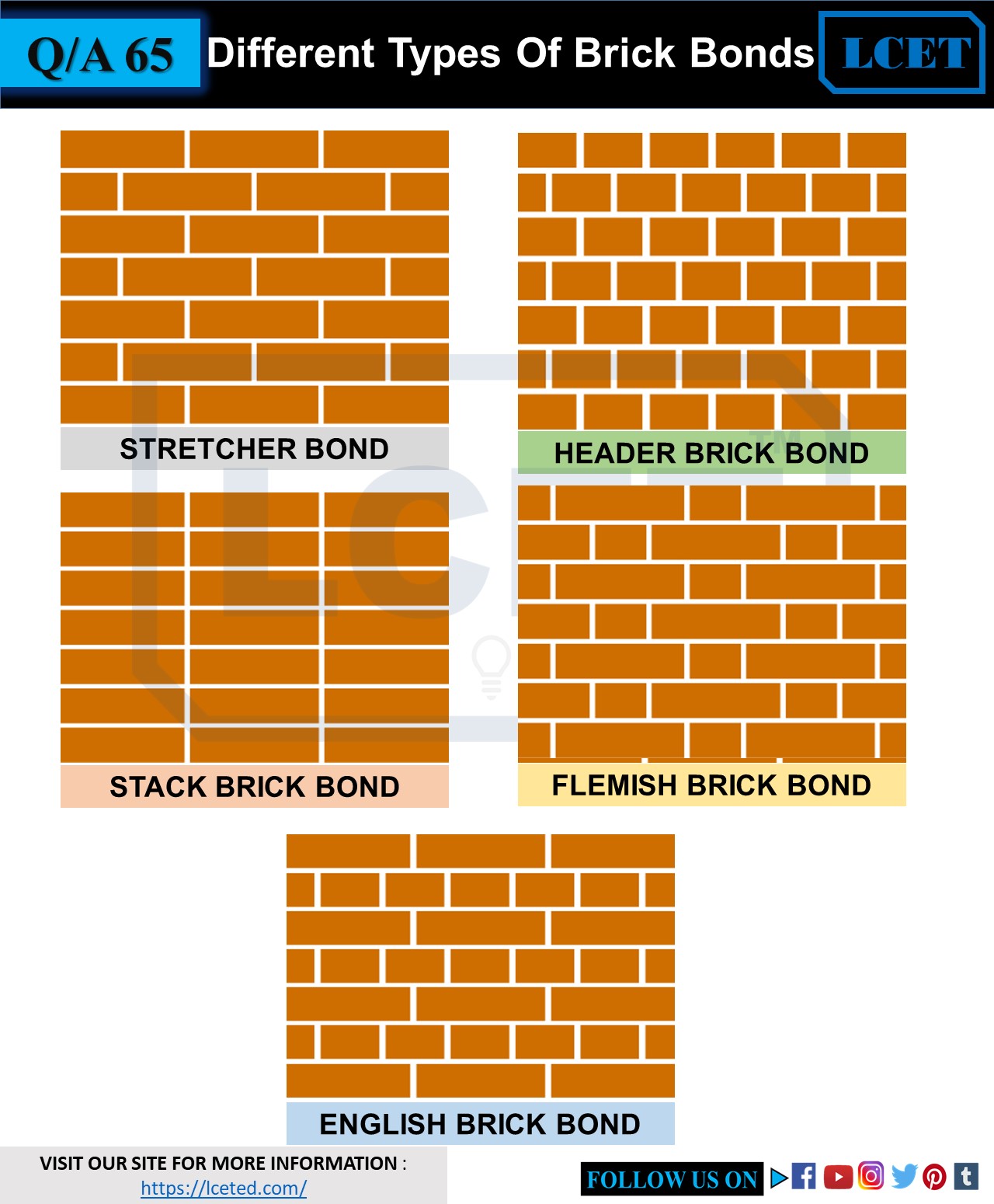
Types Of Bonds Used In Brick Masonry Wall Construction And Their Uses lceted LCETED INSTITUTE
The most commonly used types of bonds in brick masonry are: Stretcher bond Header bond English bond and Flemish bond Other Types of bonds are: Facing bond Dutch bond English cross bond Brick on edge bond Raking bond Zigzag bond Garden wall bond 1. Stretcher bond
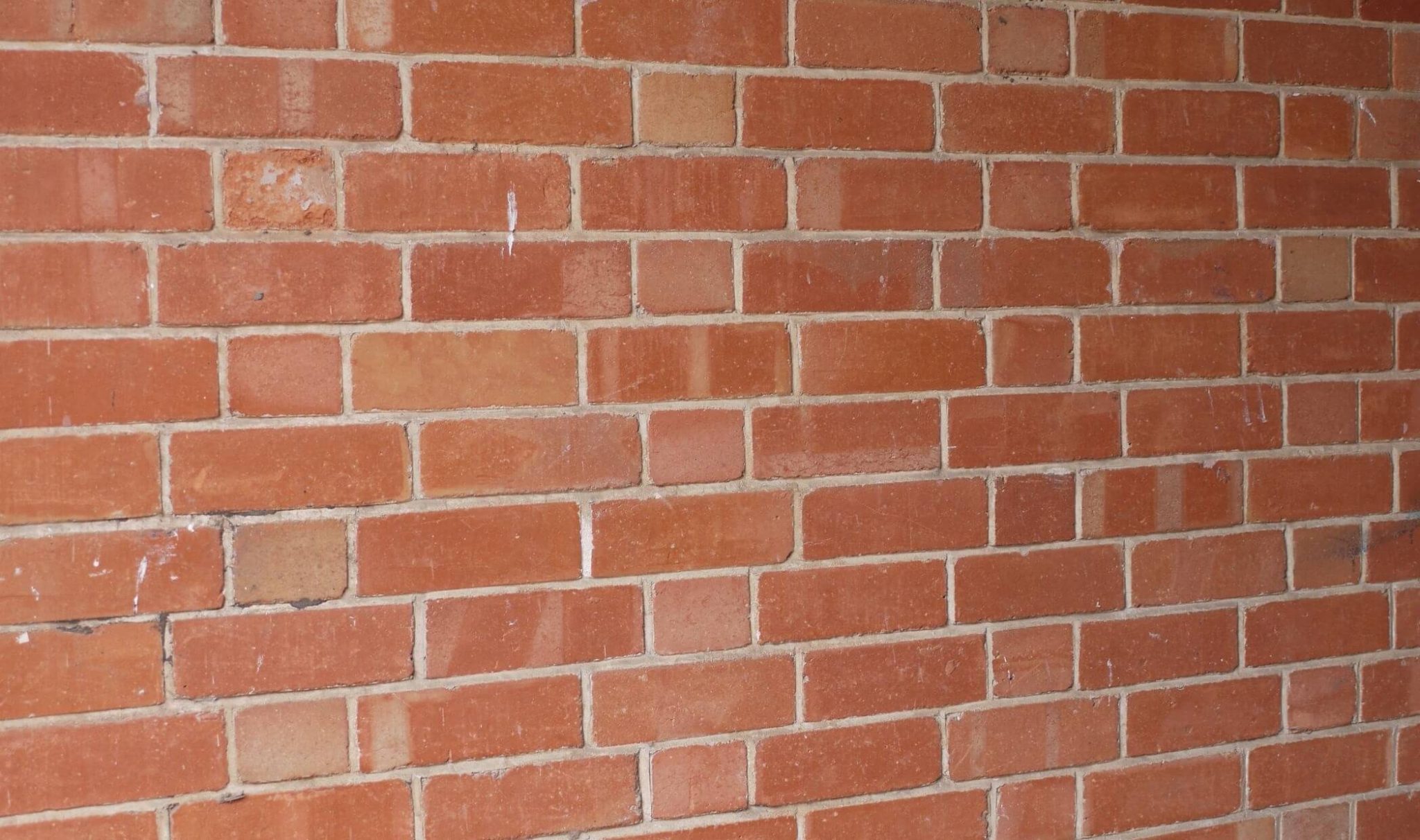
Brick Bonds Working, and 10 Types of Brick Bonds
There are the following types of brick bonds as given below; Stretcher Bond Header Bond English Bond Flemish Bond Stack Bond Dutch Bond Common Bond Facing Bond Diagonal Bond Rat Trap Bond Stretcher Bond: In a stretcher bond, all the bricks are laid as lengthwise stretchers and one of the most common brick bonds and also known as running bonds.
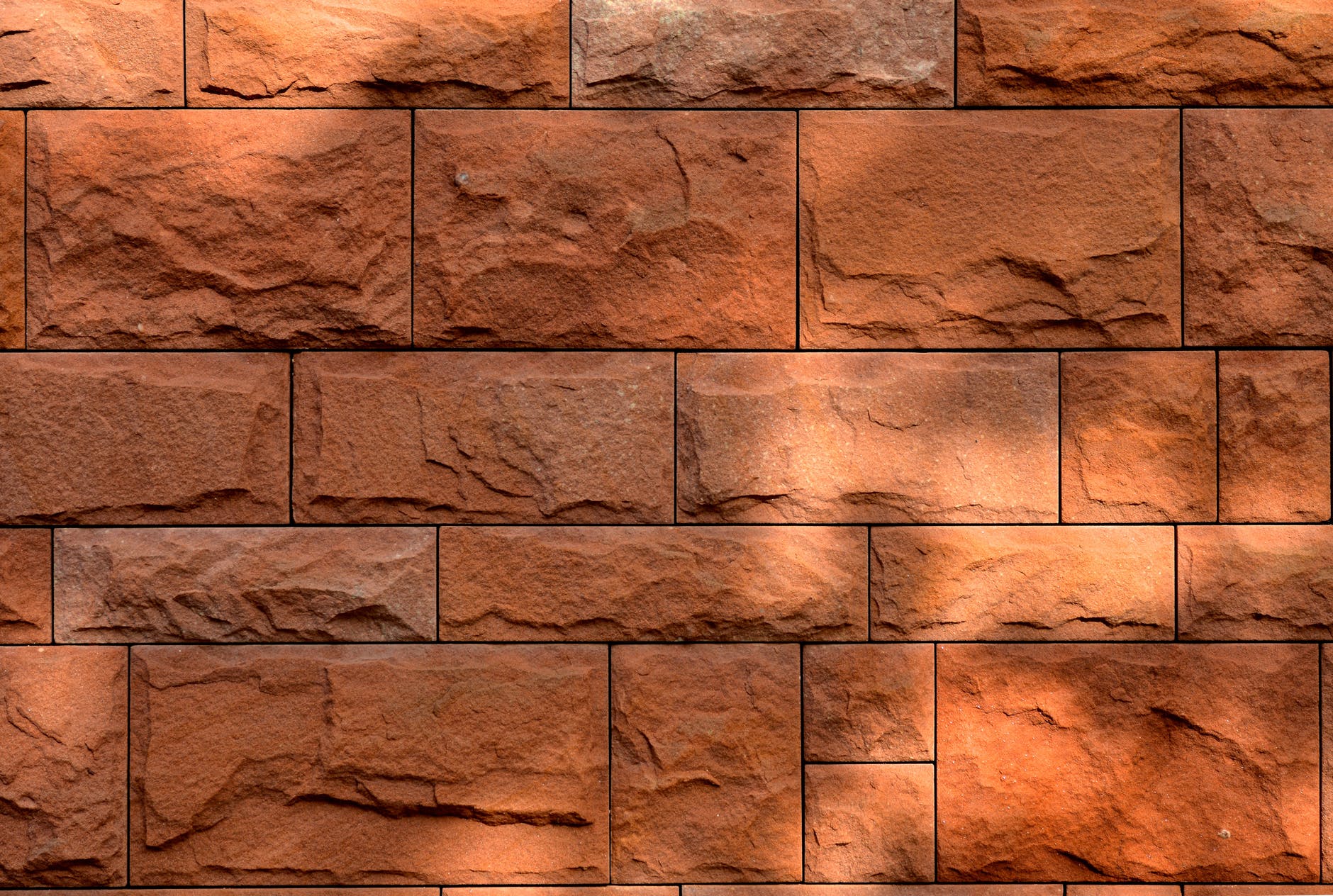
10 Most Popular Types Of Brick Bonds Go Smart Bricks
Double Flemish bond. Fig-3: Flemish bond. A single Flemish bond is the combination of a double Flemish bond and an English bond. This bond uses the strength of the English bond and the appearance of the Flemish bond. Single Flemish bond can be used for those walls having a thickness at least equal to 1 1/2 brick.
:max_bytes(150000):strip_icc()/masonry-brick-bond-common-types-2736655-cf1ec5c2e3fe46ad83252d6dbb551a20.png)
Common Types of Brick Bonds Used in Masonry
Suitable brick bonds must be selected. 9. The brick masonry work should be done improper bond. 10. The brickwork should be perfectly in level. 11. Holdfast for doors should be properly cast in masonry work. 12. The brickwork used must actually be in plumb.

Types Of Bonds Used In Brick Masonry Wall Construction And Their Uses lceted LCETED INSTITUTE
Brick bonds play a crucial role in the structural integrity and aesthetic appeal of brickwork. When it comes to construction projects involving brick, choosing the right brick bond is essential. The type of bond used determines the pattern in which the bricks are laid, affecting the strength, durability, and visual impact of the finished structure. In this article, we will explore the.
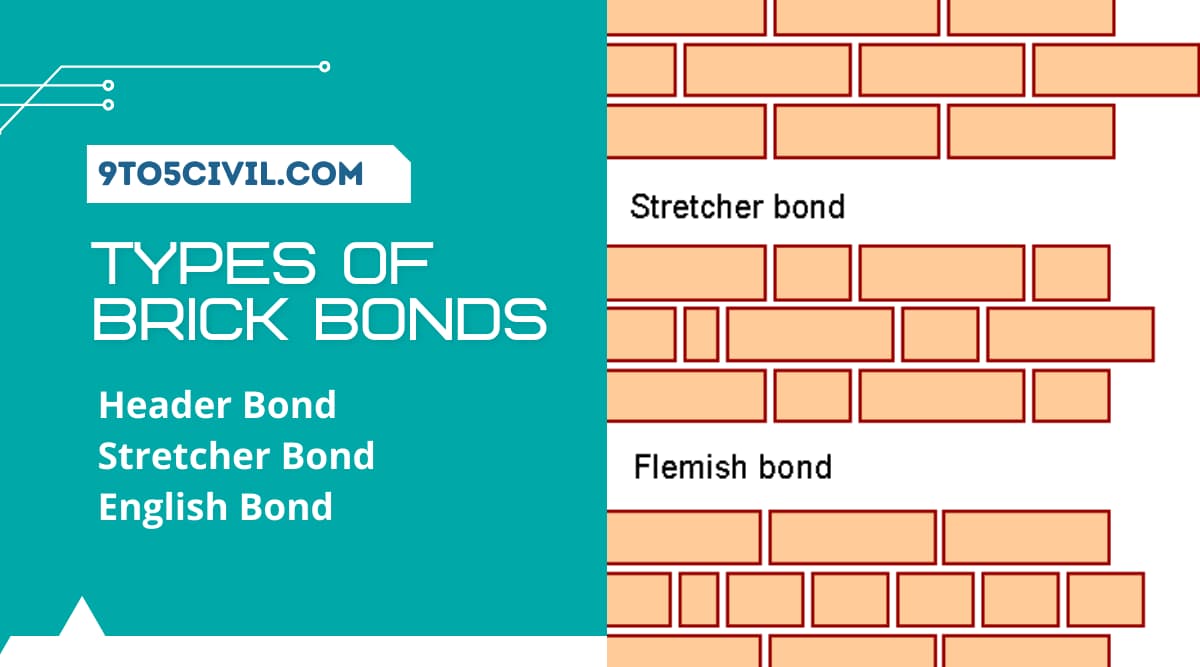
Types of Brick Bonds Flemish Bond Different Types of Brick Patterns
Some of the different types of brick bonds are, 1. English bond, 2. Flemish bond, 3. Stretching bond, 4. Heading bond, 5. Garden wall bond, 6. Facing bond, 7. Raking bond, 8. Dutch bond, 9. English cross-bond, 10. Zig-Zag bond, 11. Silverlock's bond. For English and Flemish bond refer in our website. 3. Stretching bond:

types of bonds in brick masonry YouTube
1. Stretcher Bond 11 Types of Brick Bonds With Structure Details 16 Bricks are laid horizontally and flat with a long side called a stretcher and in this bond, all brick is laid as stretchers, which is lengthwise shown in fig. Sometimes stretcher bond is also known as a running bond.

Types Of Bonds In Brick Masonry Wall Construction to more information visit👇 Masonry wall
Types of brick bonding patterns Brick orientation Mortar joint profiles Types of brick bonding patterns Stretcher bond With the stretcher bond, courses are laid as stretchers with the joint of one course falling midway between the joints of the courses below.
/GettyImages-165675151-574cf9523df78ccee10feffb.jpg)
Common Types of Brick Bonds Used in Masonry
In header bonds, all the bricks in each layer in masonry are placed as headers on the face of the wall. This type of brick bond allows better alignment for curved walls. In the header bonds, the thickness of the brick becomes 18cm thick. 2. Stretcher Bond. Stretcher bond in brick is the simplest brick pattern.

Technical Details An Architect's Guide to Brick Bonds and Patterns
The reason for the confusion is, we all assume that every brick bonds are distinguished from others. But the reality is, there are only 3 basic bonds. English Bond. Flemish Bond. Special Brick Bonds. The others are the extension of the same bonds according to the need. Identifying the brick bonds based on our need is the essential step for.

9 Types of Brick Bonds in Architecture WTN
Stretcher Stretcher bond is one of the most common types of brick bonds. The courses are laid as stretchers, with the vertical joints offset by half a brick on each layer. This type of bond is well known, and is therefore easy to build, as well as cost effective. Header Stretcher Bond
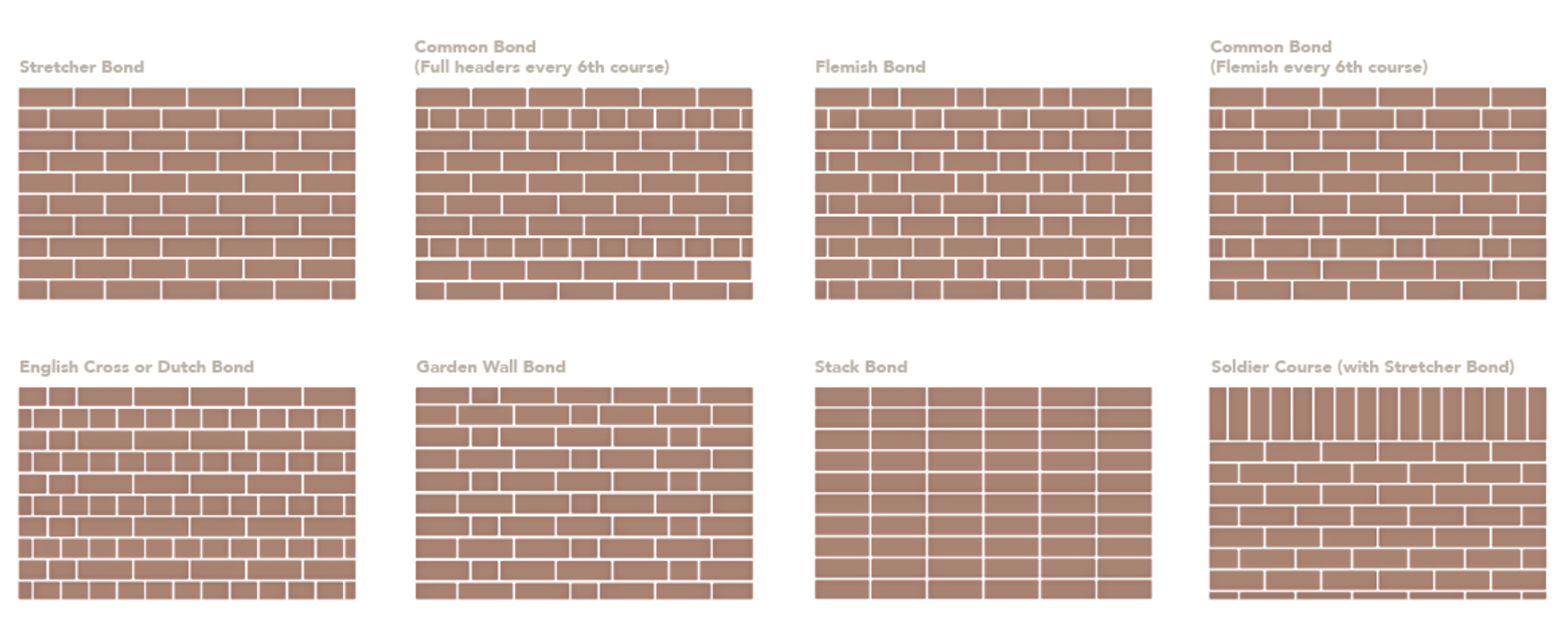
Brick Bond Patterns PGH Bricks
Types of brick bonds in brick masonry The different type is provided depending on the style of placing bricks in the walls and the binding style. Brick masonry is developed by filling mortar in layers and joints using a brick bond. In which the bricks in the wall are laid side by side and in layers.
Brick Bonds Dimensions & Drawings
Types of Brick Bonds a. Stretcher Bond b. Header Bond c. English Bond d. Flemish Bond e. Rat Trap Bond f. Zigzag Bond g. Herring-Bone Bond h. Facing Bond i. Dutch Bond j. Diagonal Bond 4.9 ( 929) 1. Introduction Brick is the oldest and most useful construction material used all over the world for masonry construction.

Common Brick Bond Patterns Amplify Masonry
A brick bond is a pattern in which bricks are laid. It applies to both brick walls and brick paving for patios and paths, as well as to concrete block and other types of masonry construction. There are many different types of brick bonds and each has its own look, installation challenges, and in the case of walls, structural considerations.